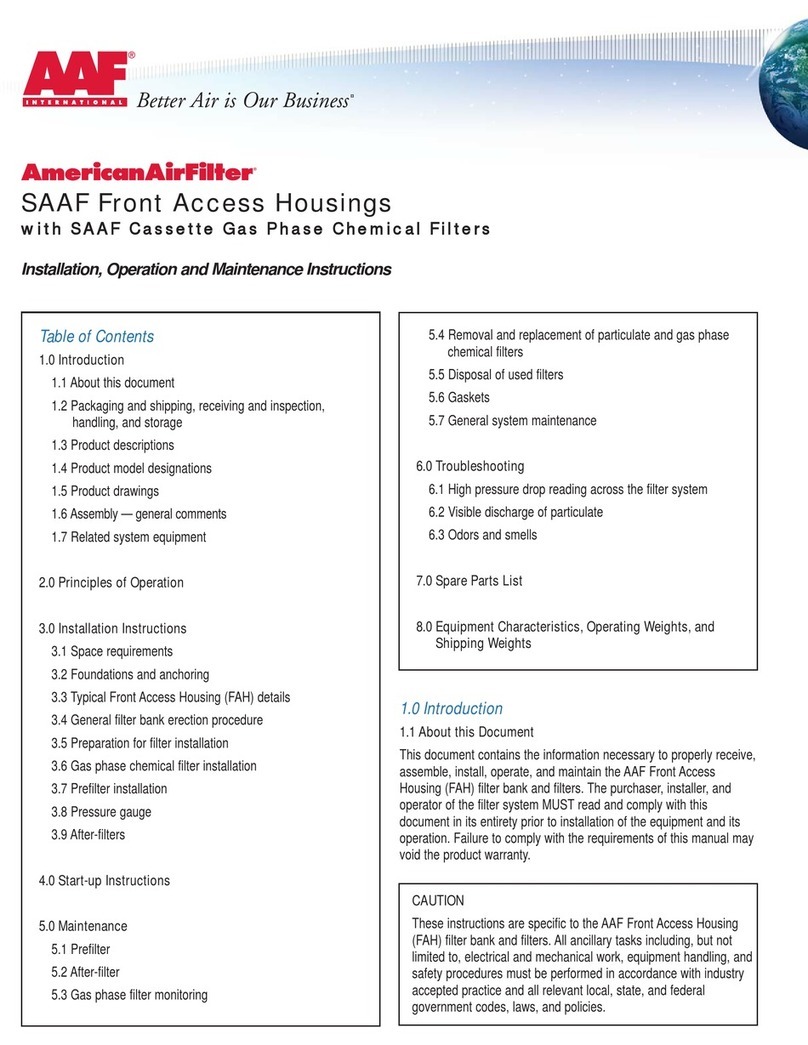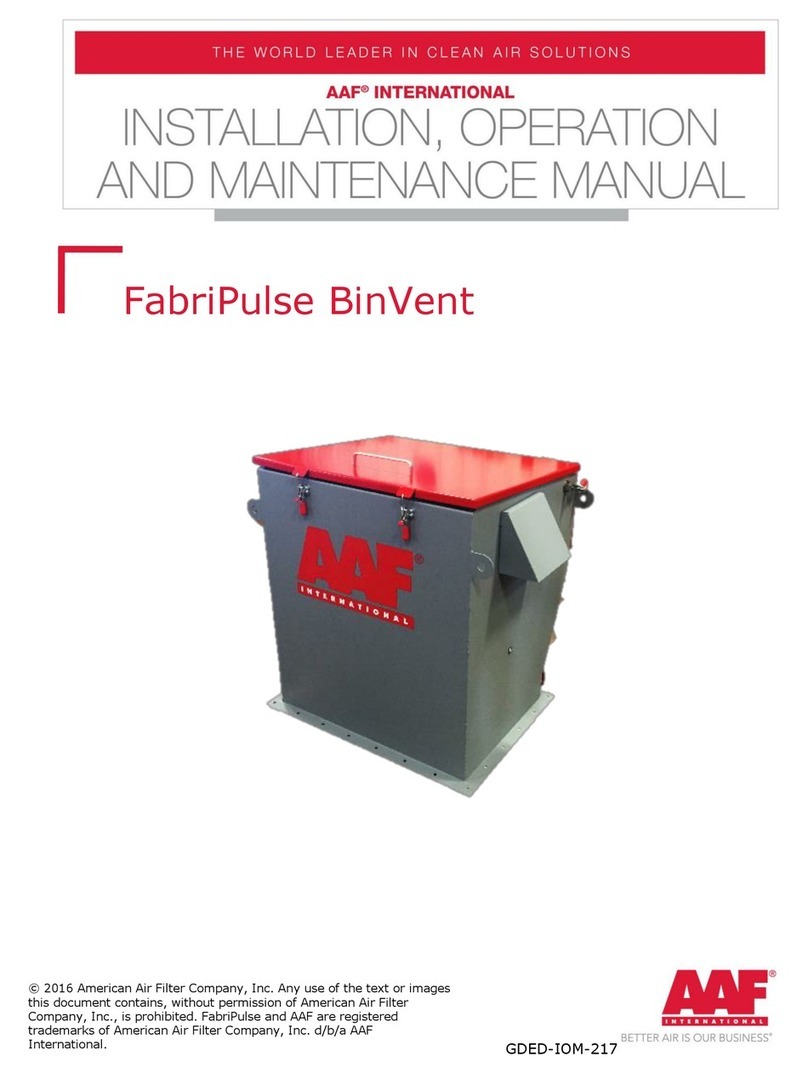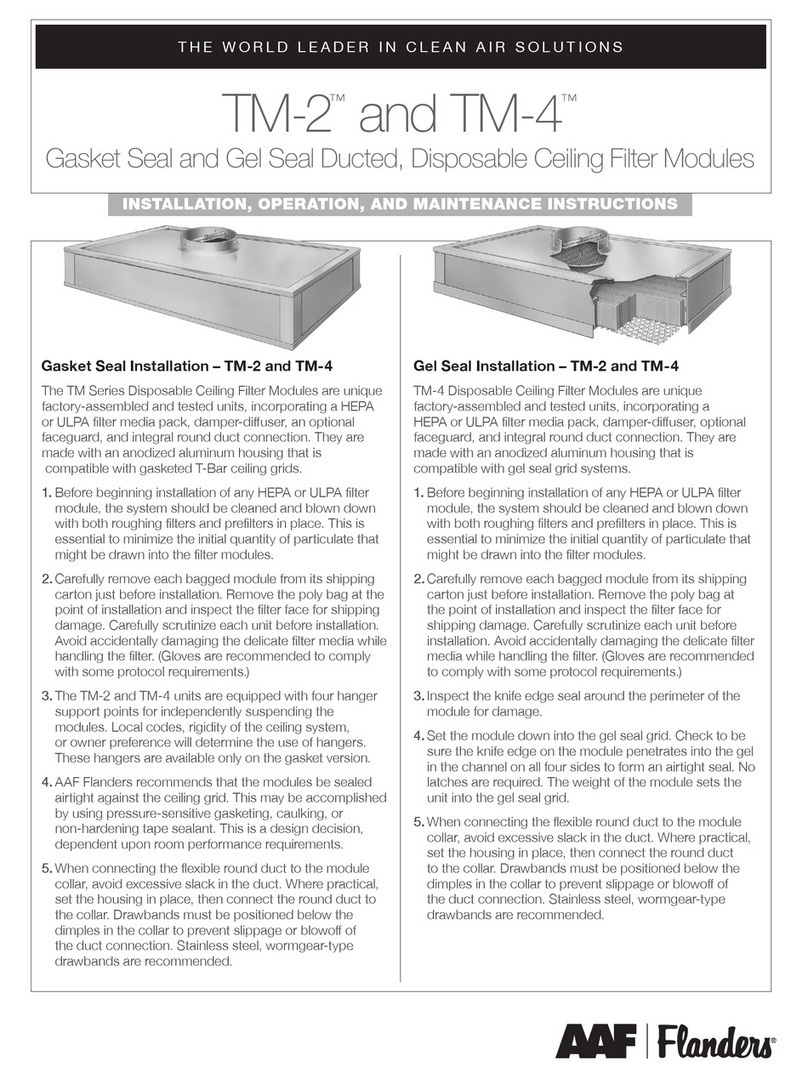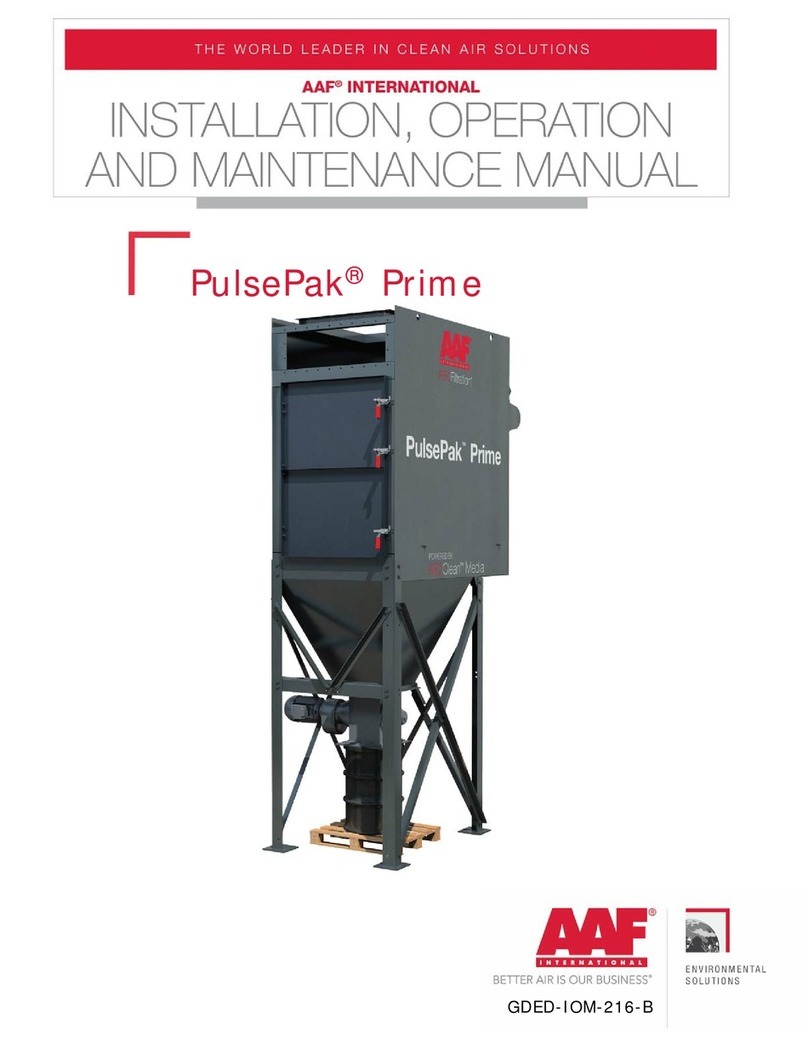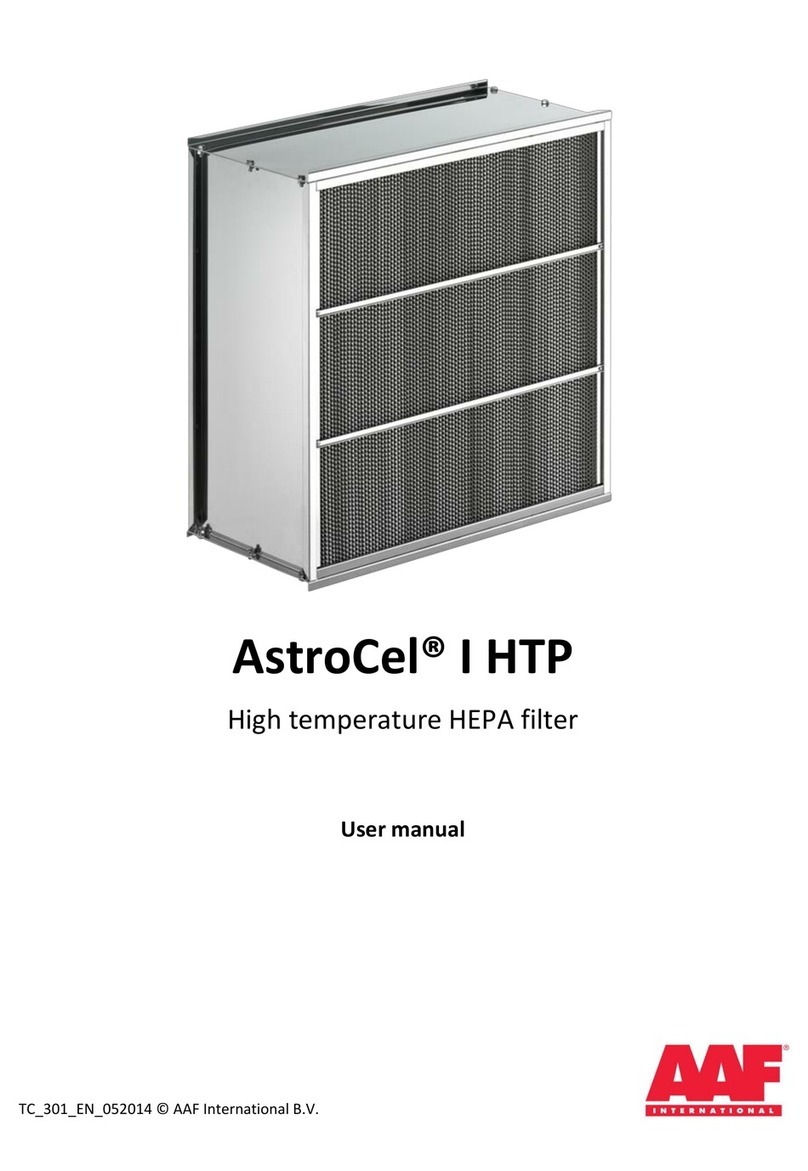10
5.4 Disposal of Used Filters
Used chemical filtration media and particulate filters shall be
packaged and disposed of in full accordance with all required and
applicable laws and regulations. Consult with local environmental
control authorities such as local, state, and federal EPA & OSHA
authorities for direction. Material Safety Data Sheets (MSDS) are
available on all products supplied by AAF. Contact your AAF
representative for further information.
5.5 Cover Lid Sealing Gaskets
The proper maintenance of the cover lid sealing gaskets is critical to
the performance of the system. Check the gaskets carefully whenever
the gas phase chemical filters are replaced. If gaskets are worn,
frayed, or damaged in any way they should be replaced. Check the
seal between the lid and the tank whenever new SAAF chemical
media is installed.
5.6 General System Maintenance
Ducts, external PORTA-Scrubber surfaces, latches, blower, and
other system infrastructure should be checked at least every 6
months. Internal surfaces shall be examined whenever filters are
replaced. Examine all components for the following:
5.6.1 Cleanliness: Sweep and vacuum all standing dust or dirt in
the system. If using cleaning solvents, be mindful of the impact of
solvents on the performance and life of the chemical media and
take appropriate precautions to protect the system.
5.6.2 Water: The system should be completely dry at all times.
The presence of standing water, condensation, or dampness is
detrimental to the performance and life of the system. Determine
and remove the cause for the presence of water in the system, dry
the system, and examine all components for the presence of molds
and other biological growth. Remove all contamination, clean and
sterilize as necessary.
5.6.3 Filter System Integrity: Ensure that the unit contains the
appropriate filter elements, both particulate and gas phase, and
that these elements are correctly installed. Check for missing or
improperly installed components and review the system seals.
Check for air leaks at joints and seams and replace gaskets,
worn hardware, and seal with caulk as necessary.
5.6.4 Duct and System Integrity: Examine the entire system to
ensure that contaminated air cannot leak around the filter system.
Check all perimeter seals and repair as necessary.
5.6.5 Corrosion: If metal components are corroded repair the
corrosion and provide protective coatings as necessary. Be mindful
of the impact of painting on the performance and life of the
chemical media, and take appropriate precautions to protect the
system. Determine the source of the corrosion and rectify.
4.0 Start-Up Instructions
Immediately on start-up, examine the filter system for any apparent
air leaks or other anomalies. Air leaks may be detected by noise
or by use of a synthetic smoke puffing device at the external joints
and seams of the filter system installation. Correct or repair any
discrepancies, as necessary. Repeat this examination after
24 hours of operation and again after one week of operation.
5.0 Maintenance
5.1 PolyKlean Blue filter: A PolyKlean Blue pad has been included
as part of the system. Under normal conditions, the filter can be
expected to last for between 10 and 12 months before reaching
its final recommended capacity loading (see the AAF drawings
for details). However, this may vary under heavier or lighter
particulate loading conditions. At an air velocity of 75 feet per
minute the 2" deep PolyKlean Blue pad can be expected to have
an initial pressure drop in the range of less than 0.1" water gauge.
The recommended final pressure drop is 1.0 in. w.g.; however, it is
recommended that the PolyKlean Blue pad be replaced whenever
new chemical media is installed.
5.2 Chemical Media Monitoring
A discussion of sophisticated chemical media monitoring is beyond
the scope of this manual. At its most simple, when the system is
used to remove nuisance odors, the time to change out the chemical
media is when the odor begins to be regularly detected on the clean
side of the system. In more stringent applications, active real time
electronic and passive coupon corrosion monitoring systems are
available to determine the performance of the system. The remaining
life of the media can be determined by taking a sample of media and
returning it to AAF for analysis. Consult with your AAF representative
regarding active and passive monitoring systems and media sampling
for remaining life analysis.
5.3 Removal and Replacement of Particulate and Gas Phase
Chemical Media
Before removing activated carbon media, it is recommended the
media bed be grounded to release any electrostatic discharge.
Removal of filters will be the reverse of the installation process
described earlier in this manual. Filter and media replacement
will be carried out exactly the same as at initial installation detail with
use of manual or pneumatic methods. Reference appropriate safety
precautions related to specific gases being handled at the facility
and any operation instructions developed during the design phase
of the project.












